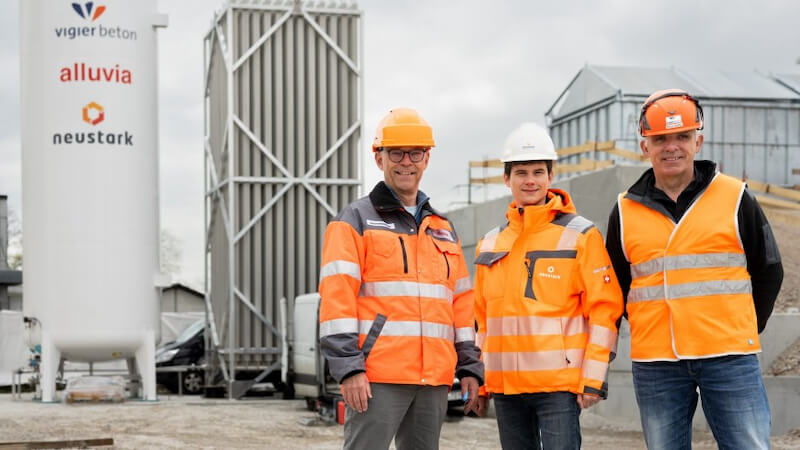This entrepreneur stores CO2 in concrete
The Swiss company Neustark recently opened a new facility for storing CO2 in concrete. It is the largest of its kind and has a storage capacity of 1,000 tons per year.
Our planet is currently setting one temperature record after another. The first week of July 2023 eclipsed all previous records. Many experts are therefore wondering how things will continue this year. Because in addition to climate change, we are also dealing with the weather phenomenon El Niño this year, which brings with it higher temperatures.
The storage of greenhouse gases is therefore becoming increasingly important in order to mitigate climate change. The Neustark AG has now commissioned its largest facility for storing CO2 in concrete in Switzerland.
CO2 storage in the recycling process of concrete
The company now operates nine plants in Switzerland. Neustark has used the past few years to test the technology. This resulted in a new capture and storage facility that can store CO2 in so-called demolition concrete over the long term. In this way, the company offsets several tons of carbon dioxide every day.
The process seems to have potential, since over a billion tons of demolition concrete are produced as a waste product every year. Since then, Neustark has used a mineralization technology to store CO2 from a biogas plant in the demolition concrete. The actual storage of the concrete takes place in the recycling process. Because demolition concrete normally finds a second life in recycled concrete or roads.
Up to 10 kilograms of CO2 in one ton of concrete
One ton of demolition concrete enables the storage of ten kilograms of carbon dioxide. Extrapolated over a year, the new system can store up to 1,000 tons of CO2 and thus offset it. In addition to working in Switzerland, Neustark would soon like to expand to Germany, Austria and France.
Basically, the technology has potential for the future due to the storage of large amounts of carbon dioxide. The system does in one hour what it takes 50 trees about a year to do. In the context of climate change, Neustark could therefore provide significant relief.
Also interesting:



